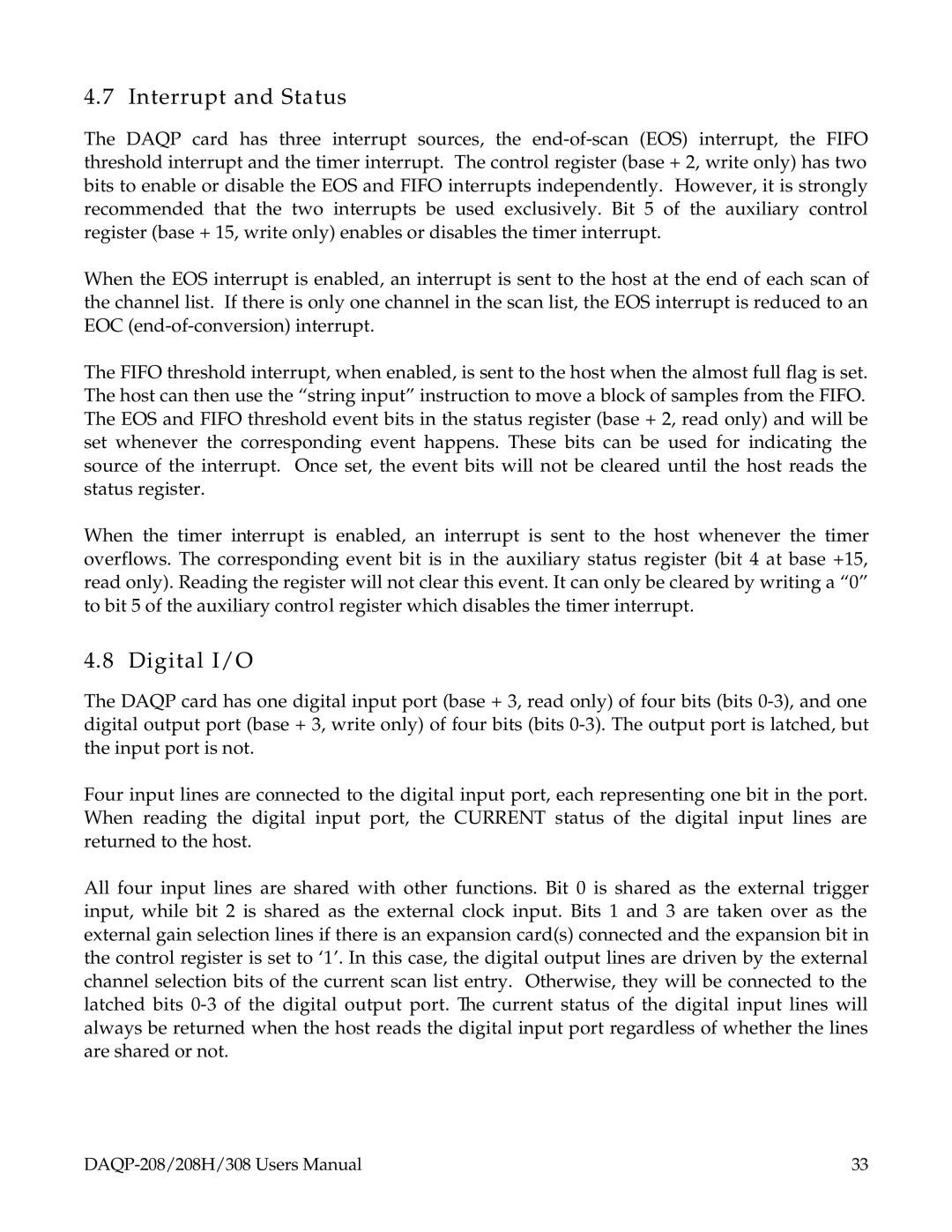4.7 Interrupt and Status
The DAQP card has three interrupt sources, the
When the EOS interrupt is enabled, an interrupt is sent to the host at the end of each scan of the channel list. If there is only one channel in the scan list, the EOS interrupt is reduced to an EOC
The FIFO threshold interrupt, when enabled, is sent to the host when the almost full flag is set. The host can then use the “string input” instruction to move a block of samples from the FIFO. The EOS and FIFO threshold event bits in the status register (base + 2, read only) and will be set whenever the corresponding event happens. These bits can be used for indicating the source of the interrupt. Once set, the event bits will not be cleared until the host reads the status register.
When the timer interrupt is enabled, an interrupt is sent to the host whenever the timer overflows. The corresponding event bit is in the auxiliary status register (bit 4 at base +15, read only). Reading the register will not clear this event. It can only be cleared by writing a “0” to bit 5 of the auxiliary control register which disables the timer interrupt.
4.8 Digital I/O
The DAQP card has one digital input port (base + 3, read only) of four bits (bits
Four input lines are connected to the digital input port, each representing one bit in the port. When reading the digital input port, the CURRENT status of the digital input lines are returned to the host.
All four input lines are shared with other functions. Bit 0 is shared as the external trigger input, while bit 2 is shared as the external clock input. Bits 1 and 3 are taken over as the external gain selection lines if there is an expansion card(s) connected and the expansion bit in the control register is set to ‘1’. In this case, the digital output lines are driven by the external channel selection bits of the current scan list entry. Otherwise, they will be connected to the latched bits
33 |
